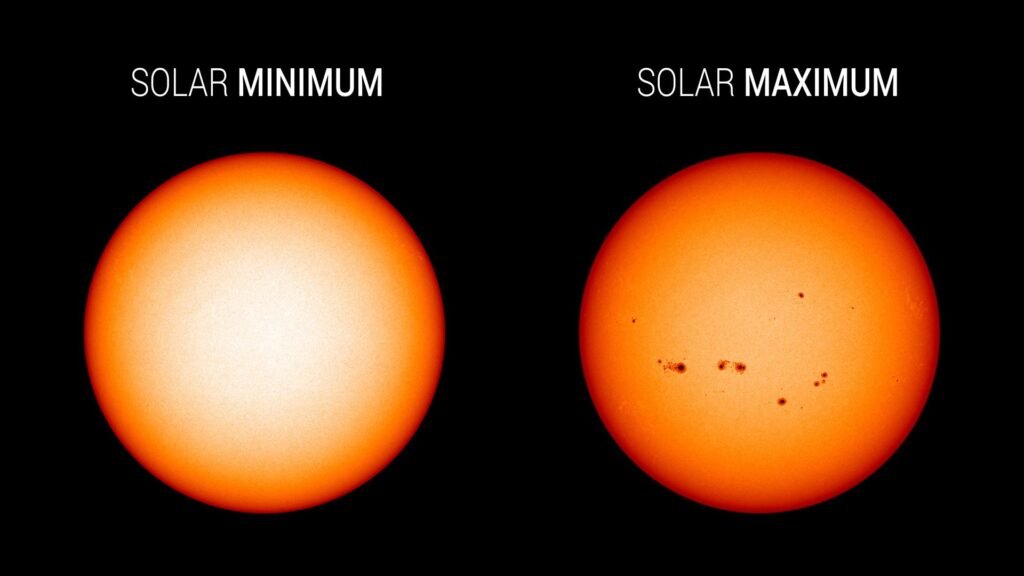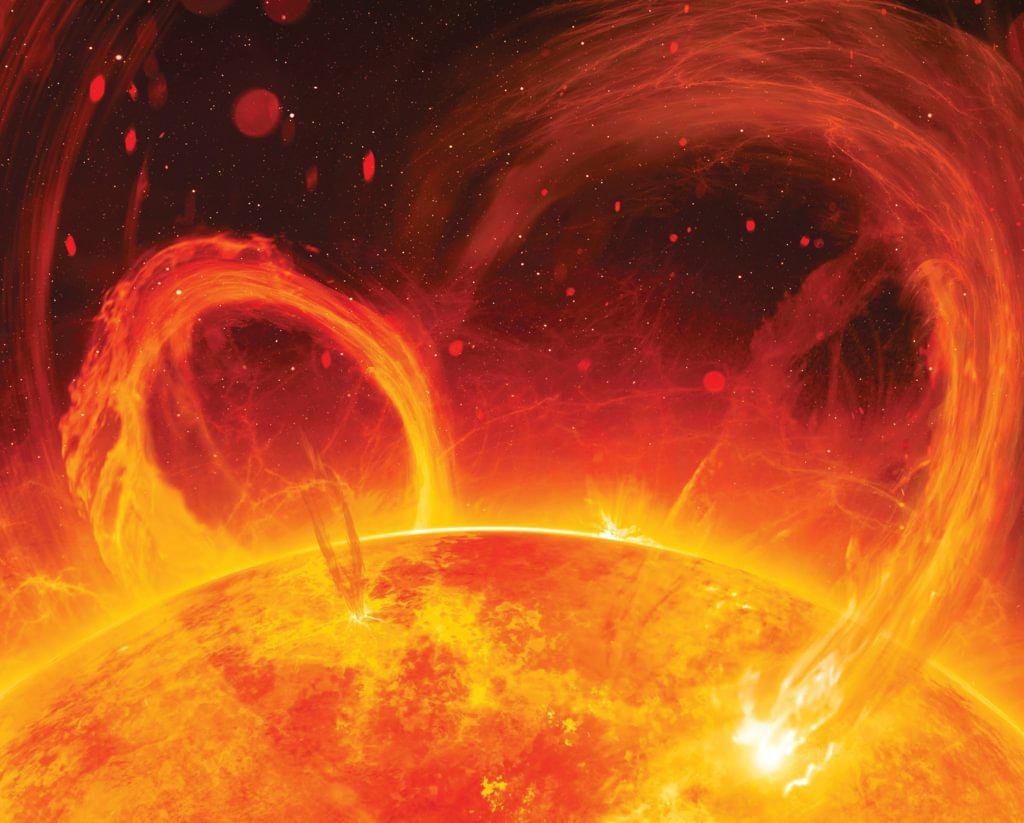The Sun, our nearest star, is a dynamic celestial body with a complex cycle of activity and scientists have been observing the sun’s solar cycles since 1755.
Earlier this week, representatives from NASA, the National Oceanic and Atmospheric Administration (NOAA), and the international Solar Cycle Prediction Panel announced that the Sun has reached its solar maximum period, which could continue for the next year, in short called the Solar Maximum 2024. This is the reason why stargazers got plenty of opportunities to catch the colorful auroras of the northern lights flicker across the night sky this year.
Solar Cycle & Solar Maximum
The solar cycle is a natural cycle the Sun goes through as it transitions between low and high magnetic activity. At the peak of a solar cycle, the Sun’s activity reaches its highest point. This phase is called solar maximum. During this time, the number of sunspots & solar activities is significantly higher than average. These dark spots on the Sun’s surface are regions of intense magnetic activity. The average duration of a solar cycle is approximately 11 years, but this can vary slightly.
Sunspots are cooler regions on the Sun caused by a concentration of magnetic field lines. Sunspots are the visible component of active regions, areas of intense and complex magnetic fields on the Sun that are the source of solar eruptions.

What Happens During Solar Maximum?
- Increased Solar Flares: Solar flares are powerful bursts of electromagnetic radiation emitted from the Sun’s surface. They can disrupt radio communications and satellite operations.
- Coronal Mass Ejections (CMEs): CMEs are large clouds of plasma and magnetic field that are ejected from the Sun’s corona. They can impact Earth’s magnetic field, causing geomagnetic storms.
- Aurora Borealis and Australis: During solar maximum, the increased solar activity can lead to more frequent and intense auroras, also known as the Northern and Southern Lights. These colorful displays of light occur when charged particles from the Sun interact with Earth’s atmosphere.

Solar Maximum 2024
The year 2024 marks the expected peak of the current solar cycle. While scientists can make predictions based on historical data and solar observations, the exact timing and intensity of solar maximum can vary.
Potential Impacts of Solar Maximum 2024
Solar activities resulting due to Solar Maximum 2024 strongly influence conditions in both space & on Earth.
1. Space Weather Events: Increased solar activity can lead to more frequent and intense space weather events, such as geomagnetic storms and solar radiation storms. These events can disrupt satellite communications, GPS navigation, and power grids.
2. Technological Challenges: The increased solar activity can pose challenges to various technologies, including satellites, spacecraft, and ground-based infrastructure.
3. Health Risks: While the Earth’s atmosphere protects us from most of the harmful radiation from the Sun, prolonged exposure to intense solar activity can pose health risks, especially for astronauts and individuals in high-altitude regions.

Preparing for Solar Maximum
To mitigate the potential impacts of Solar Maximum 2024, scientists and engineers are working to develop advanced technologies and early warning systems. These efforts include:
- Space Weather Forecasting: Improving the accuracy and reliability of space weather forecasts to provide timely warnings of solar storms.
- Satellite Hardening: Designing and building satellites that are more resilient to the effects of solar radiation.
- Power Grid Protection: Implementing measures to protect power grids from geomagnetic storms.

Conclusion
Since the exact peak of this solar maximum period can only be identified after closely observing a steady decline in solar activity following that high, scientists will need several months to pinpoint it. Nevertheless, because there have been a lot of sunspots on the Sun for the past two years, scientists have determined that this is the active phase of the solar cycle. Scientists predict that before the Sun starts the decreasing phase, which goes back to solar minimum, the maximum phase will persist for an additional year or two.
Solar maximum 2024 is a fascinating astronomical event that offers scientists and the public an opportunity to observe the Sun’s dynamic nature. While the potential impacts of solar activity can be significant, advancements in technology and scientific understanding are helping us to better prepare for and mitigate these risks. By studying solar cycles and space weather, we can gain valuable insights into the Sun’s behavior and its influence on our planet.
















Smartcric You’re so awesome! I don’t believe I have read a single thing like that before. So great to find someone with some original thoughts on this topic. Really.. thank you for starting this up. This website is something that is needed on the internet, someone with a little originality!
I am extremely impressed along with your writing talents as smartly as with the structure on your blog. Is this a paid topic or did you customize it your self? Either way keep up the nice quality writing, it is rare to peer a nice weblog like this one nowadays!